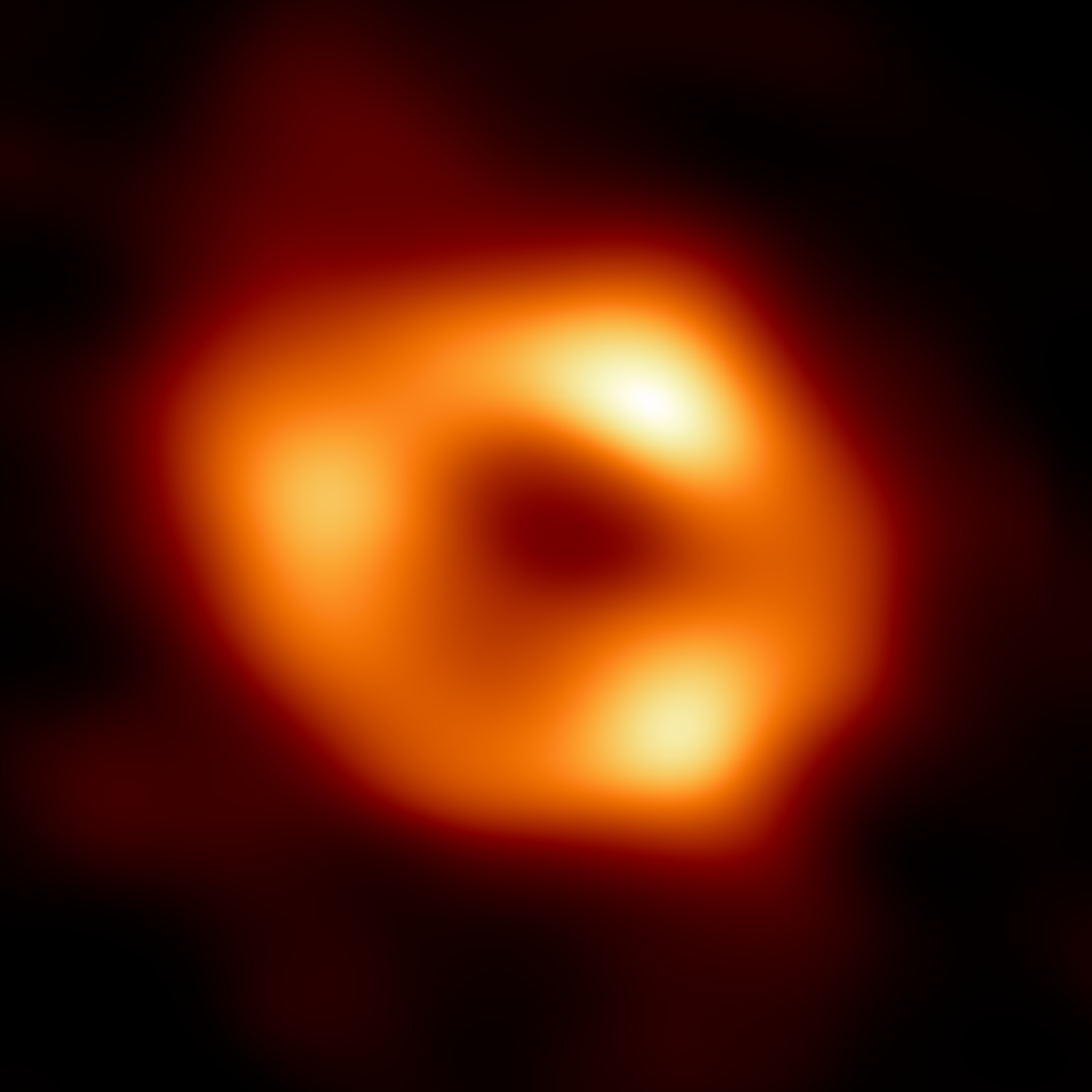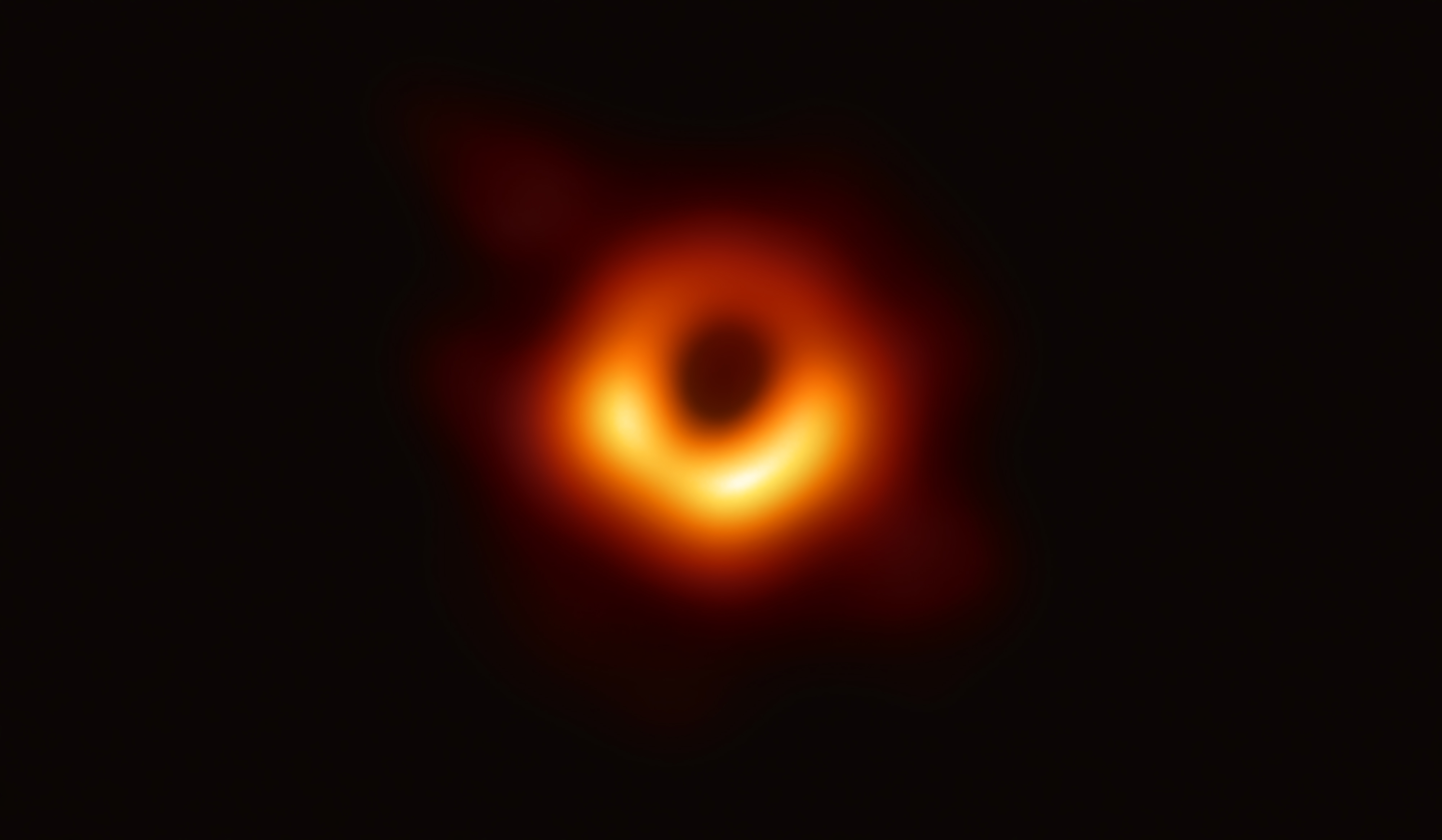Black hole is a region of space whose gravitational force is so strong that nothing can escape from it. A black hole is invisible because it even traps light. The fundamental descriptions of black holes are based on equations in the theory of general relativity developed by the German-born physicist Albert Einstein. The theory was published in 1916.
Characteristics of black holes.
The gravitational force is strong near a black hole because all the black hole’s matter is concentrated at a single point in its center. Physicists call this point a singularity. It is thought to be much smaller than an atom’s nucleus.

The surface of a black hole is known as the event horizon. This is not a normal surface that you could see or touch. At the event horizon, the pull of gravity becomes so strong that nothing known can escape it. Thus, an object can exist there for only an instant as it plunges inward at the speed of light.
Astronomers use the radius of the event horizon to specify the size of a black hole. The radius of a black hole measured in kilometers equals three times the number of solar masses of material in the black hole. One solar mass is the mass (amount of matter) of the sun.
Black holes are invisible. But astronomers have identified many objects whose properties closely match those of black holes as predicted by physicists. Therefore, scientists are confident these objects are black holes, even though they cannot be seen.
Formation of black holes.
According to general relativity, a black hole can form when a massive star runs out of nuclear fuel and is crushed by its own gravitational force. While a star burns fuel, it creates an outward push that counters the inward pull of gravity. When no fuel remains, the star can no longer support its own weight. As a result, the core of the star collapses. If the mass of the core is three or more solar masses, the core collapses into a singularity in a fraction of a second.
Loading the player...Black holes
Galactic black holes.
Most astronomers think that the Milky Way Galaxy—the galaxy that contains our solar system—also contains millions of black holes. Such galactic black holes range in mass from a few to dozens of solar masses. Scientists have found a number of black holes in the Milky Way. These objects are in binary stars that give off X rays. A binary star is a pair of stars that orbit each other.
In a binary system containing a black hole, that object and a normal, visible star orbit each other closely. As a result, the black hole strips gas from the normal star, and the gas falls violently toward the black hole. Friction between the gas atoms heats the gas near the event horizon to several million degrees. Consequently, energy radiates from the gas as X rays. Astronomers have detected this radiation with X-ray telescopes.
Loading the player...Black-hole powered galaxies
Astronomers suspect that a number of binary star systems contain black holes for two reasons: (1) Each system is a source of intense and variable X rays. The existence of these rays proves that the system contains a compact star—either a black hole or a less compact object called a neutron star. (2) The visible star orbits the compact object at such a high velocity that the object must be more massive than three solar masses.
Supermassive black holes.
Scientists think that most galaxies have a supermassive black hole at the center. The mass of each of those objects is thought to be from about 1 million to billions of solar masses. Astronomers suspect that supermassive black holes formed billions of years ago from gas and other matter that accumulated in the centers of the galaxies.
There is strong evidence that a supermassive black hole lies at the center of the Milky Way. Astronomers suspect this black hole is a radio-wave source known as Sagittarius A* (SgrA*). The clearest indication that SgrA* is a supermassive black hole is the rapid movement of stars around it. The fastest of these stars appears to orbit SgrA* every 15.2 years at speeds that reach about 3,100 miles (5,000 kilometers) per second. The star’s motion has led astronomers to conclude that an object about 4 million times as massive as the sun must lie inside the star’s orbit. The only known object that could be that massive and fit inside the star’s orbit is a black hole. 
In 2009, astronomers reported evidence of a black hole later found to be about 20,000 solar masses. The mass of this black hole makes it much larger than any known galactic black hole, but also much smaller than any known supermassive black hole.
In 2017, astronomers began observations of SgrA* and of another suspected supermassive black hole, one at the center of the elliptical galaxy M87. M87 is in the constellation Virgo, about 60 million light years from Earth. They used a technique known as radio interferometry, which can produce images of the event horizon using radio telescope dishes spread out over long distances. Scientists chose radio telescopes because, unlike other types of telescopes, they can “see through” the cloud of dust and gas that surrounds a black hole. The international network of radio telescopes used for these observations is called the Event Horizon Telescope (EHT). Together, they create an Earth-sized interferometer. On Apr. 10, 2019, EHT astronomers revealed the first image of a black hole’s event horizon—of the black hole at the center of M87—which they developed from data collected in 2017. 
